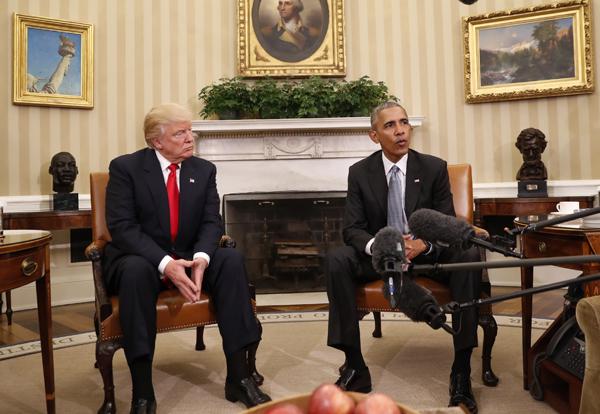You are here
Virtual event sheds light on US presidential election
By Bahaa Al Deen Al Nawas - Oct 05,2020 - Last updated at Oct 05,2020
AMMAN — As the US presidential election is approaching, scheduled for November 3, incumbent President Donald Trump is running for a second term after being nominated by the Republicans against former vice president Joe Biden.
The national government of the US is not elected at once in the same year; every two years, the House of Representatives and a third of the Senate are elected.
The US president is elected every four years, with a focus on decentralising power, Dean of the Schar School of Policy and Government at George Mason University Mark J. Rozell said.
Rozell was speaking during a briefing presented as part of the “Elections 2020: A Virtual Reporting Tour of the United States and the American Electoral Process”, held and organised by the Foreign Press Centres at the US Department of State — Bureau of Global Public Affairs.
The election process has multiple stages and candidates at first compete for party nomination over several months and in various states, Rozell said.
He noted that the two major parties hold nominating conventions to formally ratify their choice of president for the general and presidential elections.
This year due to the COVID-19 crisis, the conventions were held virtually, where the president and vice president are picked, for whom eligible citizens will vote in the presidential election of the Electoral College.
The system of the Electoral College gives each state a number of electors based on the total representatives in Congress. First the general elections take place where people cast their vote for the group of the college's electors, and those electors ultimately decide who the president is during the presidential elections.
While the electoral voters ultimately decide who wins the presidency, there is also the “winner takes all” system, through which the candidate who wins the popular vote within a state, takes 100 per cent of the electors of the college.
“There are 538 electors at the Electoral College, 270 is the magic number, the candidate who gets 270 or more becomes president of the United States,” the dean said.
Rozell said that some states are strongholds of the Democratic Party while others favour the Republican Party and no campaigns are being held in those states.
However, campaigns are held in swing states where both parties have similar level of support among voters.
There are around five to 10 swing states and they are the states “that make a difference”, Rozell said
In 2016, many Americans thought Hillary Clinton was going to win because she had 257 electors and needed only 13 more to reach 270.
“Donald Trump had a very different kind of political appeal than the typical Republican Party candidate, and he was able to appeal to some voting constituencies that typically vote Democrat in elections, particularly on his populist economic policies related to trade and opposition to globalisation and the impacts that globalisation has had on the manufacturing sectors of our economy, concentrated heavily in the upper Midwest and Midwest states,” he said.
Trump ended up winning three upper Midwest states, called “Great Lakes states”, which typically went to Democrat in every cycle of elections, reassuring Clinton to the extent she hadn’t campaigned there, and the loss of those votes in the Electoral College led to her ultimate loss, Rozell added.
The question for the current elections therefore is whether Trump is going to maintain the upper Midwest states, especially since “he has not been successful in implementing his promises to them”, Rozell said.
Rozell also highlighted the importance of the “Latino vote”. Clinton got two-thirds of the Latin vote in 2016 while Barrack Obama got over 75 per cent and the 10 per cent drop from Obama to Clinton was very important in key swing states, he underlined.
Related Articles
WASHINGTON — “Beautiful” is how US political outsider Donald Trump described his shock presidential win against rival Hillary Clinton on the
WASHINGTON — The race between Hillary Clinton and Donald Trump for the White House has tightened with two months to go before Election Day,
WEST PALM BEACH, Florida — For months Donald Trump called the presidential election “rigged”.

















